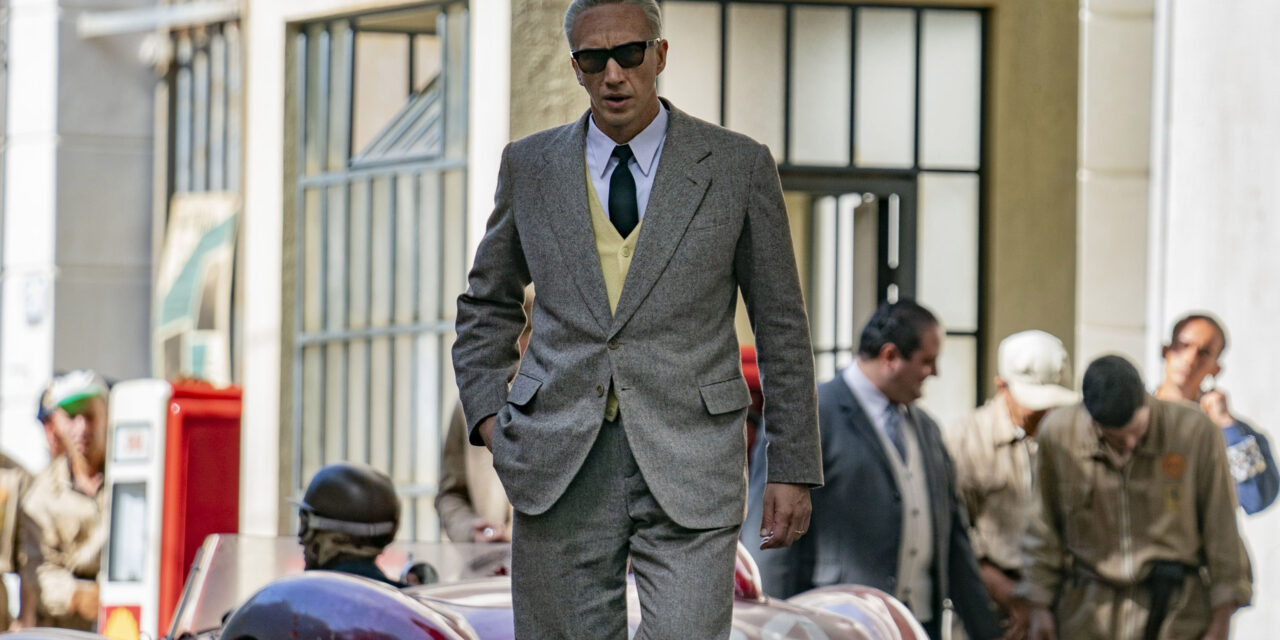In the early-to-mid sixties one might turn on the TV and find a car race in progress, frequently on Wide World of Sports. If the event came from Europe or, as it attracted more and more European and British talent, Indianapolis, the announcer would recite names of drivers familiar to fans of the sport as the cars flashed by: Jim Clark, A. J. Foyt, Dan Gurney, Graham Hill, Jackie Stewart, Phil Hill.
By 1965, the engines moved to the rear of the chassis, the cars themselves got lower to ground, wheels widened, and the speeds gradually increased. Earlier, from the fifties to, say, 1963, most still had front engines with alarmingly thin tires nearer the car’s body. The single-seaters I saw the great Stirling Moss race were often like that although some expanded to hold two-drivers side-by-side for longer races. In Moss’s heyday, driving suits were not asbestos; frequently, drivers wore sports shirts or crewneck sweaters, covered their eyes with a pair of goggles, and protected their vulnerable skulls with polo helmets or similar gear. As an old issue of Forbes FYI says, they sneered at seatbelts, believing it was safer to be thrown from the car in a crash.
As long as movies have existed, directors and cameramen have been fascinated with auto speed. Barney Oldfield, a legendary racer, featured in silent films as early as 1913. But it wasn’t until John Frankenheimer directed Grand Prix (infamously parodied by Mad Magazine as Grim Pix) that the car-racing movie changed forever. Starring James Garner and Yves Montand, among others, it followed the formula 1 circuit and filmed much of the action with cameras attached to the front of the cars or from a truck running ahead of them. The noise and jittery sense of being at the wheel made for an excitement unseen before. And most racing films since have worked with similar techniques with the addition now—for good or ill—of CGI.
Ferrari, which hit the theaters the day after Christmas, surely uses the same methods (with added CGI), but it’s more than just racing with an overlay of soap opera. The story centers on Enzo Ferrari’s (Adam Driver) attempt to save his company from bankruptcy. Ferrari race cars were world famous, but the potentially more profitable “sideline” of sports cars for the broader (that is, richer) public was failing, selling only 98 cars per year. The plan to rescue Ferrari centers on selling to Fiat. Enzo goes so far as to float a story that he’s in negotiations with Ford to nudge Fiat into action, as indeed it does.
But first Enzo’s cars must win the Mille Miglia, as the name suggests, a thousand-mile race across Italy that had been running annually, except for the war years, since 1927. (Historical note: Ferrari had, in fact, won it seven times before the climactic 1957 race in the film.) More pressing, he must get full control of the company before Fiat agrees to the deal, a major obstacle because Laura, his wife, from whom he is virtually estranged, holds half interest.
The Ferraris’ personal life may prove a drag on the plot to those who come to see fast cars only, but it adds a human dimension to the film that might otherwise be absent. Laura (Penelope Cruz) well knows that Enzo has an eye for other women, but what she doesn’t know is that when they were separated during the war, he formed a permanent attachment to Lina Lardi (Shailene Woodley) and has begotten a son, Piero (Giuseppe Festinese). That would be a major problem under normal circumstances, but the Ferraris’ relationship defies normality. Laura, also, bore Enzo a son, Alfredo (Dino), who died from muscular dystrophy. Irrationally, she blames Enzo who, she screams, promised to save him. Nevertheless, she sells her interest, and the race to both save the company and win the Mille Miglia goes on.
The Mille Miglia takes up enough of the movie to satisfy me. Leading up to it, the key drivers get enough of an introduction to make their presence less of a mystery: Piero Taruffi (Patrick Dempsey), Peter Collins (Jack O’Connell), and, notoriously, Alfonso de Portago (Gabriel Leone). The race, filmed beautifully through the Italian countryside and villages, provides its share of thrills, giving the audience much the same sense of being in the car as did Frankenheimer’s Grand Prix. No moment can surpass the famous crash in the final miles of the race in which de Portago and his co-driver Edmond Nelson, speeding along at over 130 mph, had a tire explode, sending their Ferrari 335 S crashing into a telephone pole, shooting over a gulley, and careening back into the road. In addition to de Portago and Nelson, nine spectators (including five children) died. The bloody event ended the Mille Miglia forever and sullied Ferrari’s win (they took places one through three) although the company was later exonerated of manslaughter. Whether the car went airborne as spectacularly as the movie shows, I cannot say, but it’s a fair bet that an out-of-control vehicle at that speed might do some unimaginable things.
Adam Driver’s Ferrari is more handsome than the actual Enzo, but gray hair and make-up give him a convincing late middle-aged look; moreover, he does a believable Italian accent. The performance is creditable and nuanced. Cruz’s Laura is perhaps more interesting than Woodley’s Lina, but who would want them to be the same? Leone’s de Portago, whose autograph Enzo’s bastard son Piero covets, is (forgive the pun) driven, with a slight Spanish flair that hindsight reveals as his tragic flaw. The cars, mostly old-style front-engine designs, are both a joy and a horror to view; they look like death-traps, as, by the film’s climax, one of them proves to be.
I don’t know that I went into the theater with extremely high expectations, but I more than got my money’s worth. The acting, the production, and the more mundane facets of the plot held my attention. I’d gladly see it again and may well buy the DVD once it’s available. Has the experience made me drive faster on the road? Happily, no. But, as Ferrari himself would surely admit, there’s a little bit of a racer in all of us.














